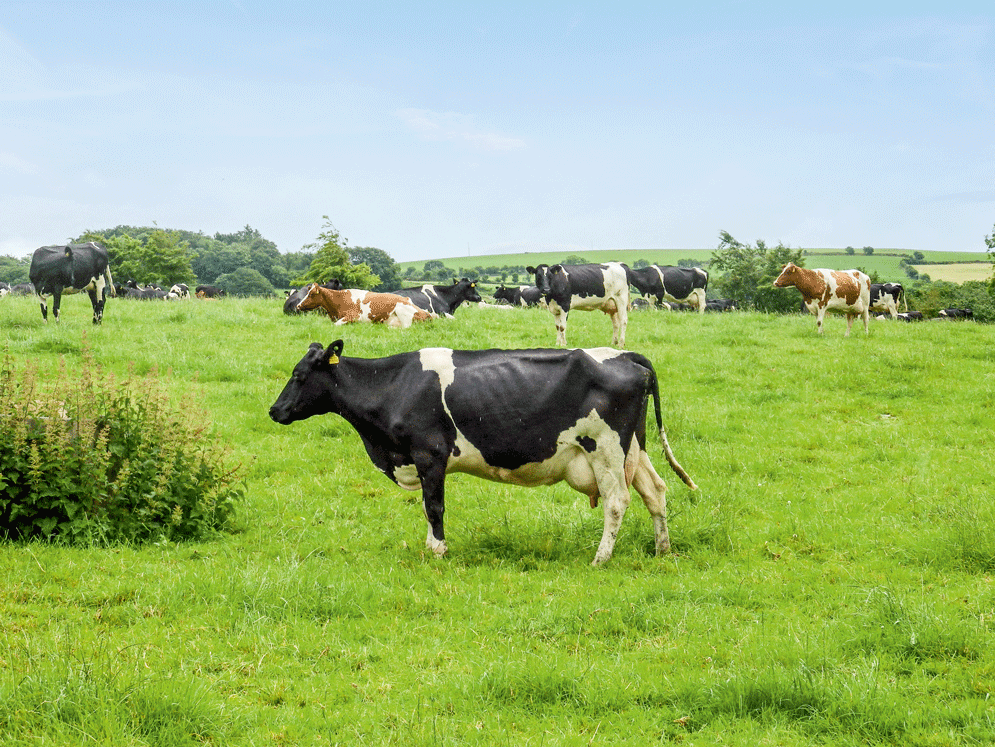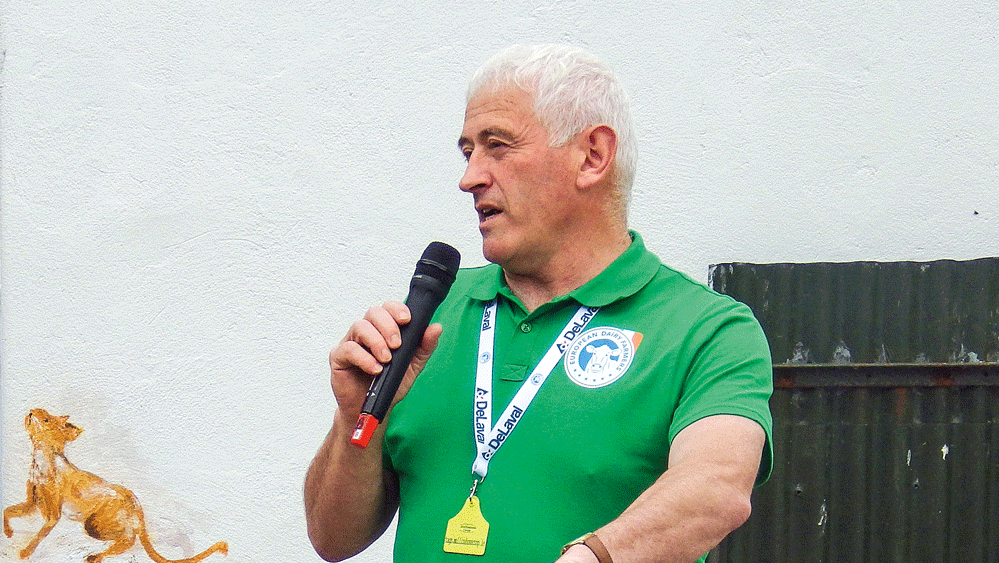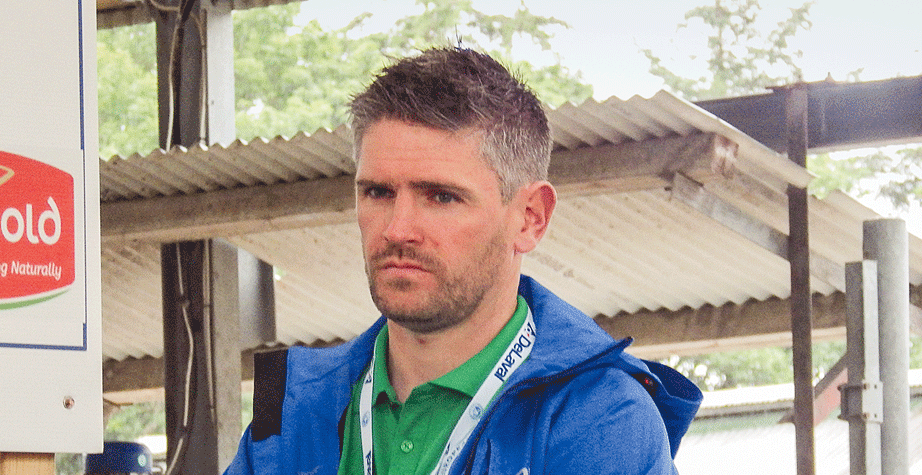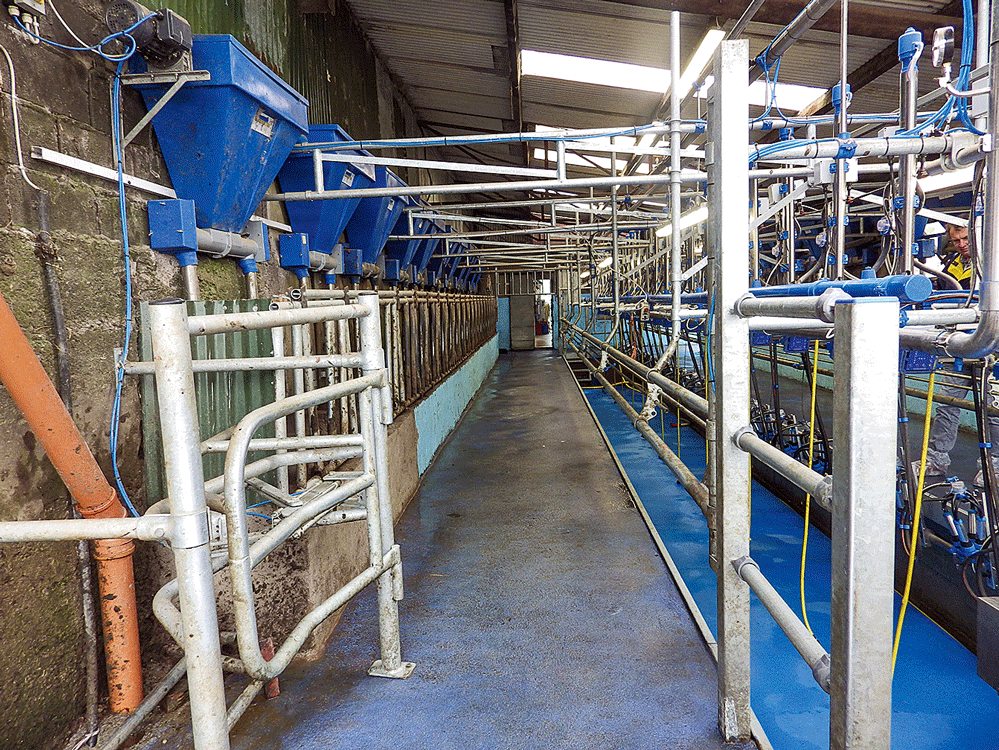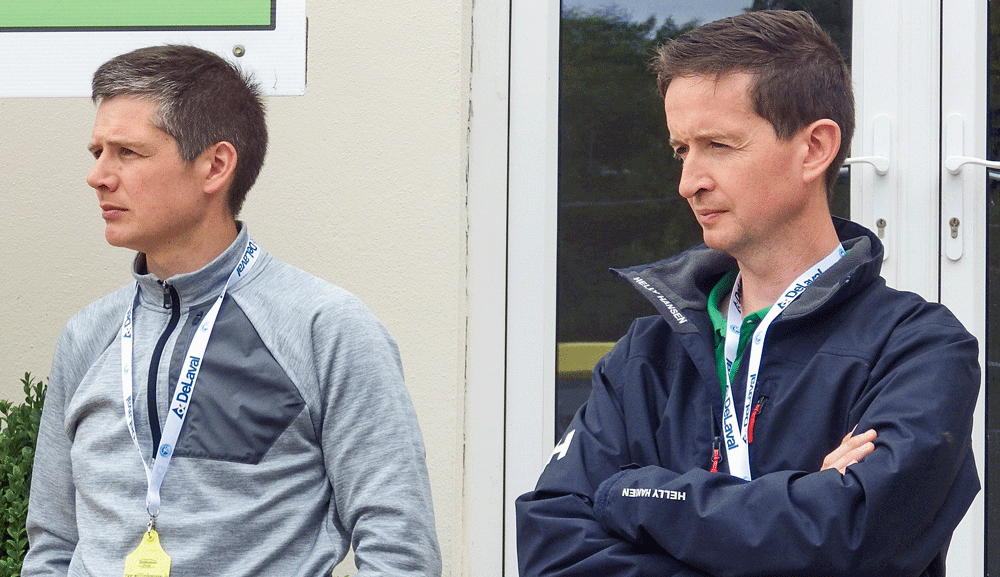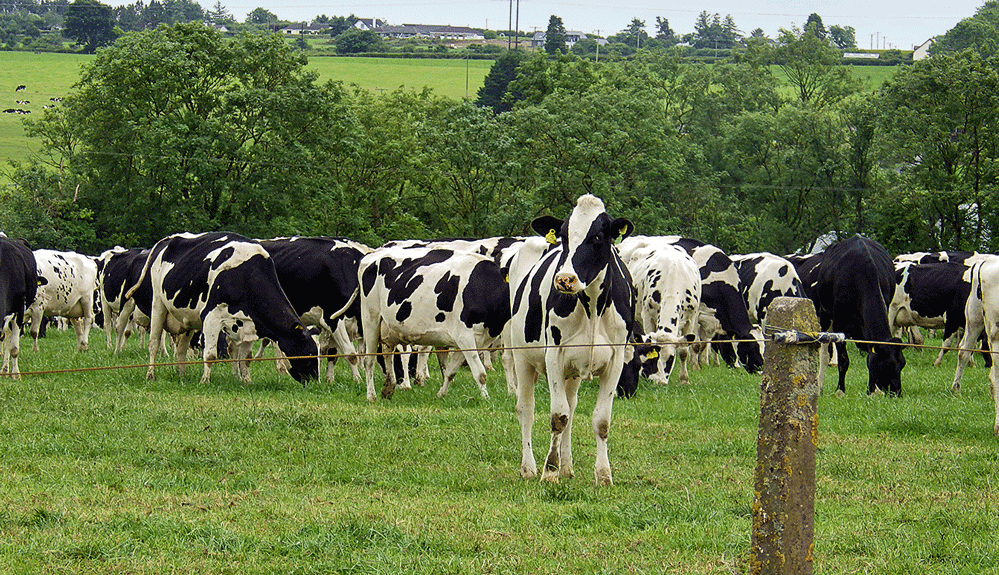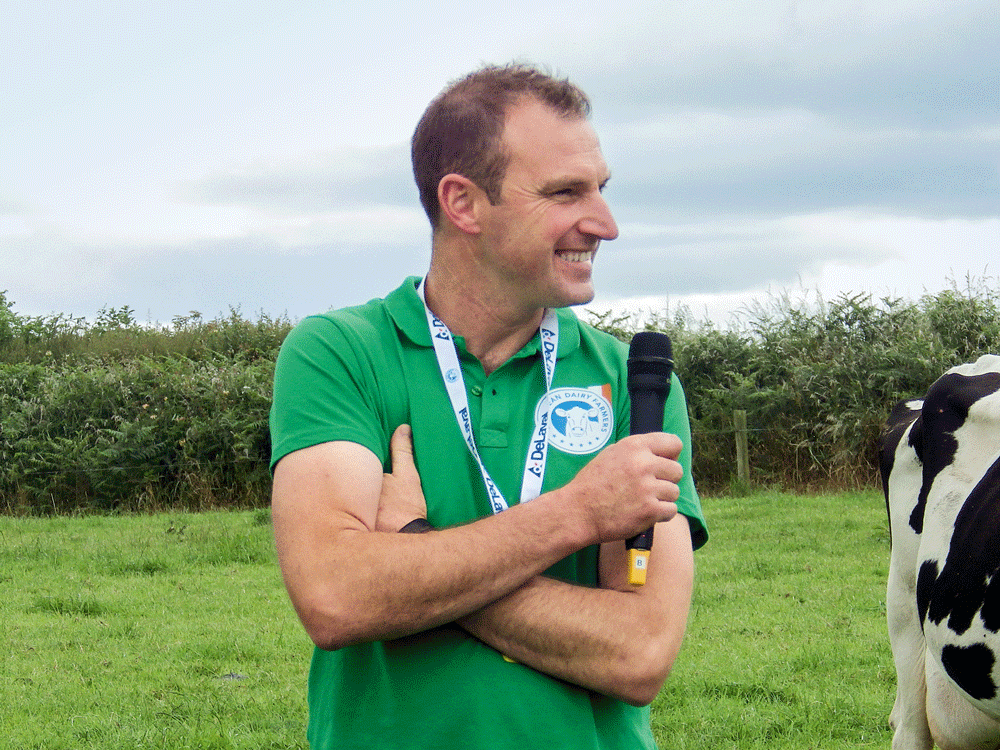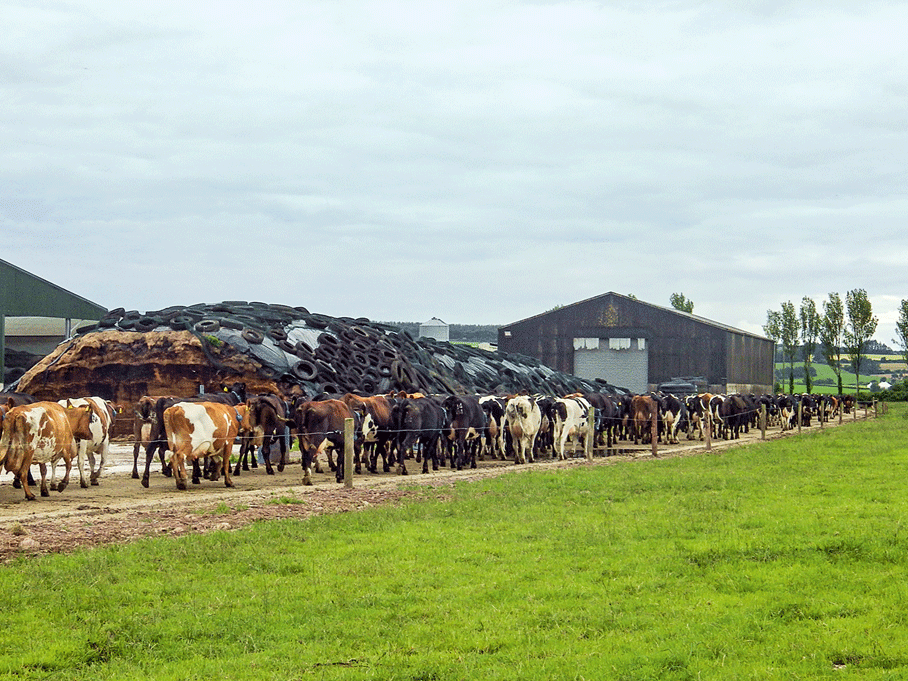Ireland: Ideal amount of grass - and that every day
By Katharina Heil, DLG Mitteillungen
Reduced N fertilisation, more biodiversity, improvement of water quality and the CO2 footprint of dairy production: The issues currently occupying Irish milk producers are not so different from those of their European counterparts. In some areas, however, the Irish are a step ahead: for example, the vast majority of dairy producers know exactly what their farm carbon footprint is. Supported by the national research and advisory institute Teagasc, there is a binding industry roadmap that envisages a reduction of greenhouse gas emissions by 22 to 30 % by 2030. On average, farms currently have a carbon footprint of 0.9 kg CO2/kg ECM.
In other areas, the situation is only seemingly more progressive. For example, in biodiversity. Here, the widespread hedgerows and copses offer a good approach. But the grassland itself is managed so intensively that there can hardly be any talk of biodiversity. Especially not when nitrogen fertiliser is used intensively, as is still the case in many places. Mixing white clover into the dominant ryegrass stands should change this in future.
Coolnasoon
How do you set up the farm to provide an income for two families? For Michael Murphy and his son Jerry, the answer is 420 cows on three farm locations, moderately high costs and high profits. At present, Irish milk producers are on the sunny side anyway: milk prices on the island are also above 50 Ct/kg, but with much lower production costs than here. The break-even point (the milk price that would be necessary to cover all costs) for the Murphys is 29.7 Ct/kg. This is even in the upper range of the Irish comparison.
Like many Irish farms, the Murphy family's has grown strongly in recent years. In 2015, the farm still had 115 cows, but at that time it already had two locations, one of which was 5 km away from the home farm. With the opportunity to take over a third site 20 km away in 2017, the herd grew to 315 cows and eventually to its current level. This was of course accompanied by various construction and expansion measures. Most recently, a barn construction for 250 cows on the home farm and the expansion of the milking parlour by 22 places. In addition to 2.5 family workers, two herd managers and various part-time workers are employed on the farm.
Focus on breeding animals
The milk yield of the herd is 6,316 kg. The Murphys run a strict grazing system: at the beginning of the year the cows calve within six weeks. 315 of them calve on the home farm, another good 100 on the third location. From the beginning of February, the cows already go out to pasture. At first, there is a rapid change of pastures. This way the family has 280 grazing days and harvests about 14 t DM grass/ha. To get the cows pregnant again quickly, they are artificially inseminated over a period of six weeks, after which the non-pregnant animals are sent to the bull farm for another six weeks.
Breeding plays an important role on the farm. The EBI (Economic Breeding Index) - the decisive breeding value for productive and fertile cows - is 202 €. This puts the farm in the top 1 % of the country. Eight insemination bulls have already been produced on the farm. In the EBI, milk yield and fertility traits are weighted with 33 % each. The last third is made up of health, management, calving and slaughter traits.
The carbon footprint for the farm is 0.74 kg/kg ECM. This also places them among the best Irish farms. In order to still improve this value, points such as keeping cows in the herd longer, less N fertiliser, an increase in ingredients in the milk and a lower protein content in the concentrate feed are on the "to-do" list for the near future.
Lisduff Farms
Breeding also plays a major role on the O'Sullivan family farm. Around 250 female offspring are sold every year. It goes without saying that all female calves are genomically tested. With about 25 cows, the family also runs an embryo transfer programme. Looking at the EBI, the O'Sullivans' herd reaches a value of 156 €. This is because the farm managers focus a little more on increasing milk yield.
This is related to their other special feature: They have two contracts for winter milk. This means that they have to produce almost 30 % of their milk volume in the months of November to February. Of this, at least 6 % of the volume in each individual month. The Dairygold dairy pays surcharges of 5.6 and 7.5 Ct/l for this. In order to be able to milk in the winter months as well, the farm's 490 cows calve in two blocks: about 30 % of the herd from September to November, the rest between January and early April.
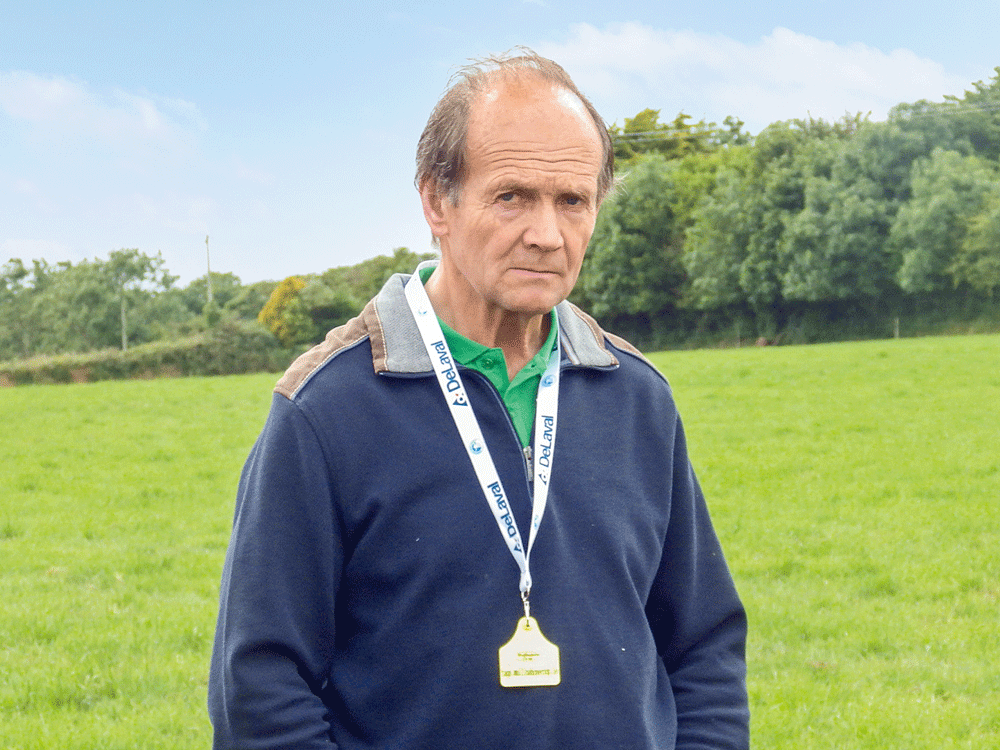
Embryo transfer and winter milk
The milk yield is 8,332 kg. By Irish standards, the O'Sullivans run a "high input - high output" system. In addition to grazing from March to November, the cows are fed a TMR of grass silage, maize silage and wet stillage in winter. They also receive 2.1 t concentrate/cow. Nevertheless, the break-even point is only 18.1 Ct/kg.
Lisduff Farms is also divided between different locations. On the home farm with 91 ha there are 370 cows. A second site 9 km away has 81 ha and 120 cows. There is also a farm with another 118 ha that contributes to silage production.
As environmental demands are also increasing for Irish dairy farms, some farmers are trying new approaches. For example, Lisduff Farms are doing cropping trials. On one area, a grassland mixture of three types of grasses, two types of clover as well as chicory and plantain is being tried out. Teagasc is providing scientific support for the trial. The diversity of species is intended to make the grassland more robust. Clover reduces the use of N fertiliser. Chicory is said to increase palatability and feed intake. And plantain is said to reduce the N excretion of cows from their urine. All sides are eagerly awaiting the results.
Other aspects for more sustainability are selective drying off, which the farm already practices. In addition, protected urea is used for fertilisation and N fertilisation is reduced overall. The farm also attaches importance to the maintenance of the landscape elements between the paddocks.
Clonnoe Farm
Shane Fitzgerald's Clonnoe Farm has also grown tremendously in recent years. In 2008, Fitzgerald took over the farm with 120 cows from his father. After the end of the quota, the herd grew to 220 cows. In 2016, a barn for 280 cows followed, and in 2021 another for 150. Meanwhile, the farm milks 450 cows. Fitzgerald uses a three-breed cross of Friesian cows of New Zealand type, Norwegian Red and Jersey. Since the animal numbers have been increased from within the herd, the main task now is to consolidate the farm. For himself, the farm manager describes the change of tasks as "from managing the cows to managing the people who manage the cows".
The milking herd is located on the home site with 143 ha. Two other sites, 3 and 18 km away, are home to the young cattle and are used for silage production. A total of 90 ha are also managed here. The milk yield is currently 6,673 kg. The farm manager states 6700 kg as the target value. At 20.7 Ct, he has already reached a very low break-even point.
Managing employees
A major challenge for Fitzgerald is the issue of employees. He has a total of five permanent workers, plus seasonal workers as needed. On this farm, too, all cows calve within nine weeks at the beginning of the year, so there is an absolute work peak here. During this time, there is a so-called "night calver" who only looks after the calving cows at night.
Overall, Fitzgerald tries to offer the best possible working conditions. For example, even during peak work periods, the goal is that employees do not work more than 48 hours per week. Actually, an extension to 60 hours would be allowed during this time. However, this would have to be compensated for at other times. The fact that employees not only keep timesheets but have employment contracts at all is not common on all farms. For Fitzgerald, however, this is essential in order to get good people. In addition, the farm uses a system for heat and illness detection to make the work easier.
Balancing act between profitability and environmental protection
The cows graze on the farm 280 to 290 days a year. To achieve an optimal grass yield, Fitzgerald measures the height of emergence on average about 43 times a year and uses this to decide when to move the cows and where. He also regularly takes soil samples and analyses the manure to achieve optimal results. 15 to
16 t DM/ha thanks to these close controls. About 10 % of the land is freshly reseeded each year. Fitzgerald also now sows white clover to save N fertiliser. His carbon footprint is already in a comparatively good range at 0.81 kg CO2/kg ECM. Other measures for more sustainability include the spreading of manure close to the ground, the use of protected urea for fertilisation or the regular maintenance of landscape elements between the paddocks. For reduced use of medicines, the herd is selectively drained and regularly checked for worms and parasites.
In order to keep the licence to produce, a balance has to be found between sufficiently large farms and environmental protection, Fitzgerald says. It seems that he and many other Irish milk producers are already well on their way.



